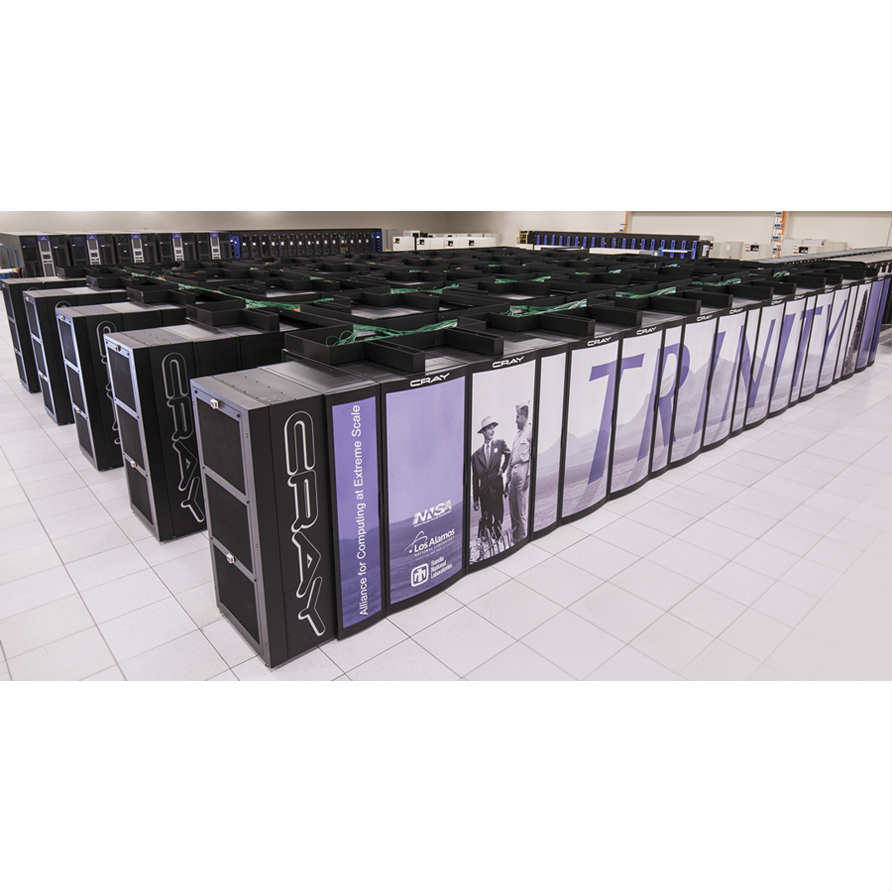 The Trinity Supercomputer at Los Alamos National Laboratory was recently named as a top 10 supercomputer on two lists: it made number three on the High Performance Conjugate Gradients (HPCG) Benchmark project, and is number seven on the TOP500 list.
The Trinity Supercomputer at Los Alamos National Laboratory was recently named as a top 10 supercomputer on two lists: it made number three on the High Performance Conjugate Gradients (HPCG) Benchmark project, and is number seven on the TOP500 list.
Trinity has already made unique contributions to important national security challenges, and we look forward to Trinity having a long tenure as one of the most powerful supercomputers in the world.” said John Sarrao, associate director for Theory, Simulation and Computation at Los Alamos.
Trinity, a Cray XC40 supercomputer at the Laboratory, was recently upgraded with Intel “Knights Landing” Xeon Phi processors, which propelled it from 8.10 petaflops six months ago to 14.14 petaflops.
The Trinity Supercomputer Phase II project was completed during the summer of 2017, and the computer became fully operational during an unclassified “open science” run; it has now transitioned to classified mode. Trinity is designed to provide increased computational capability for the National Nuclear Security Agency in support of increasing geometric and physics fidelities in nuclear weapons simulation codes, while maintaining expectations for total time to solution.
The capabilities of Trinity are required for supporting the NNSA Stockpile Stewardship program’s certification and assessments to ensure that the nation’s nuclear stockpile is safe, secure and effective.
The Trinity project is managed and operated by Los Alamos National Laboratory and Sandia National Laboratories under the Alliance for Computing at Extreme Scale (ACES) partnership. The system is located at the Nicholas Metropolis Center for Modeling and Simulation at Los Alamos and covers approximately 5,200 square feet of floor space.




